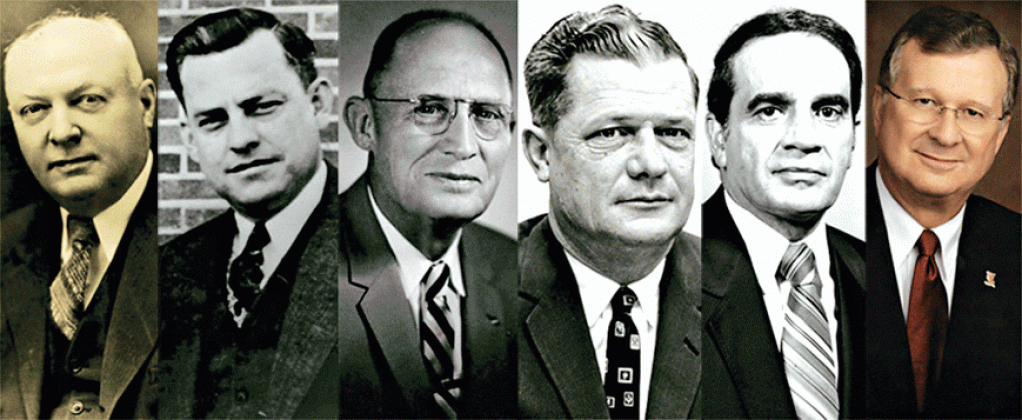
When Zack Stein began planning a digital exhibit about the six presidents who’ve led the University of Louisiana at Lafayette, he confronted 120 years of historical materials.
He first confronted more than 2,000 cubic feet of official documents and hundreds of other items related to the presidents’ personal lives housed in the University Archives and Acadiana Manuscript Collection, part of the Special Collections division of Edith Garland Dupré Library.
“It was hard,” recalled Stein, the library’s digitization archivist. “There’s a lot, but you are always asking, what is the best way to tell this story? What is the best material that tells this story?”
Ultimately, he chose 10 items for each president that he believed best exemplified their tenures and legacies.
For Dr. Edwin Lewis Stephens, who became the first president of the new Southwestern Louisiana Industrial Institute in 1900 and served until 1938, Stein selected the cover page of an article the president wrote comparing Louisiana’s potential to the growth of a live oak tree.
Stephens had an affinity for live oaks and was founder of the Live Oak Society. In 1901, he planted 18 young trees near the campus’ entrance. Ten remain at the corner of Johnston Street and University Avenue.
Stephen’s successor, Lether Edward Frazar, oversaw one of the largest building programs in the University’s history during his administration from 1938 to 1940.
The exhibit features a photograph of Frazar at the dedication ceremony for McNaspy Stadium.
The football field was among a dozen academic buildings, athletics facilities and dormitories built and dedicated during Frazar’s two years as president.
His successor, Dr. Joel Lafayette Fletcher Jr., began his tenure in 1940. The United States entered World War II the following year, and Fletcher’s early administration had to contend with the local effects of the global conflict.
Fletcher corresponded regularly with alumni in the armed forces and students who left college to join the military. The exhibit includes one newsy letter from Fletcher to a student who was then in naval training school in Illinois. The military had requisitioned several campus buildings to house officer training programs, Fletcher wrote.
When the war was over, Fletcher contacted former students and encouraged them to return to complete their educations. If they couldn’t afford tuition, he secured campus jobs for the returning students, often at the school’s dairy farm.
Stein said Fletcher’s compassion is a trait shared by his two predecessors, Stephens and Frazar, and his three successors: Dr. Clyde L. Rougeau, who served from 1966 to 1973; Dr. Ray P. Authement, whose 34-year tenure began in 1973 and ended with his retirement in 2007; and Dr. Joseph Savoie, the University’s current president who this year marks a decade at the University’s helm.
“They really had a connection with the students. They really wanted students to thrive and succeed.”
Some of the materials Stein included in the digital exhibit were featured previously in display cases that accompanied a series of portraits of the five former presidents unveiled last year on Dupré Library’s first floor.
The portraits inspired Stein to create the digital exhibit, which he hopes will in turn stir interest in the University’s history and its leadership.
He concluded the exhibit with a list of primary and secondary materials Special Collections retains relating to the presidents.
“Physical materials are important, but they don’t last forever. By making these materials digital, we are preserving them and making them accessible to the public. It may also encourage people to visit the archives and learn more.”
Visit the presidential exhibit and others at library.louisiana.edu/collections/digitization/digital-exhibits.
